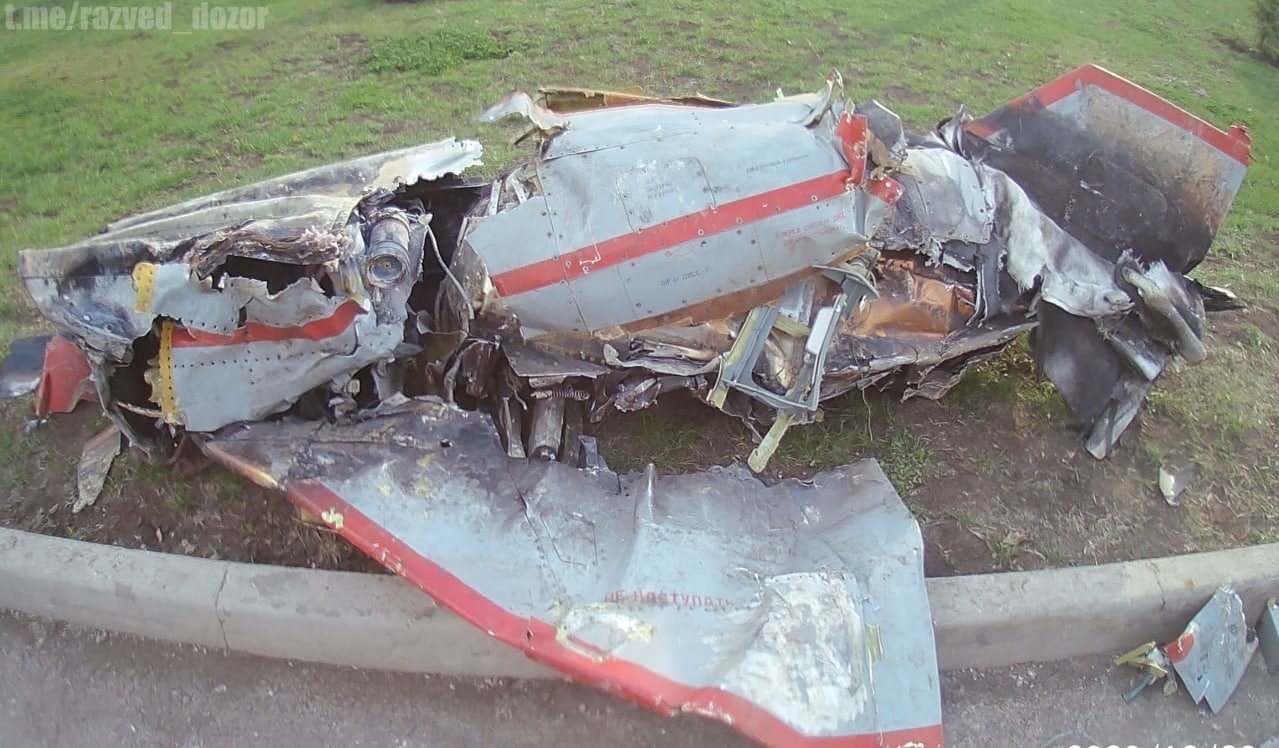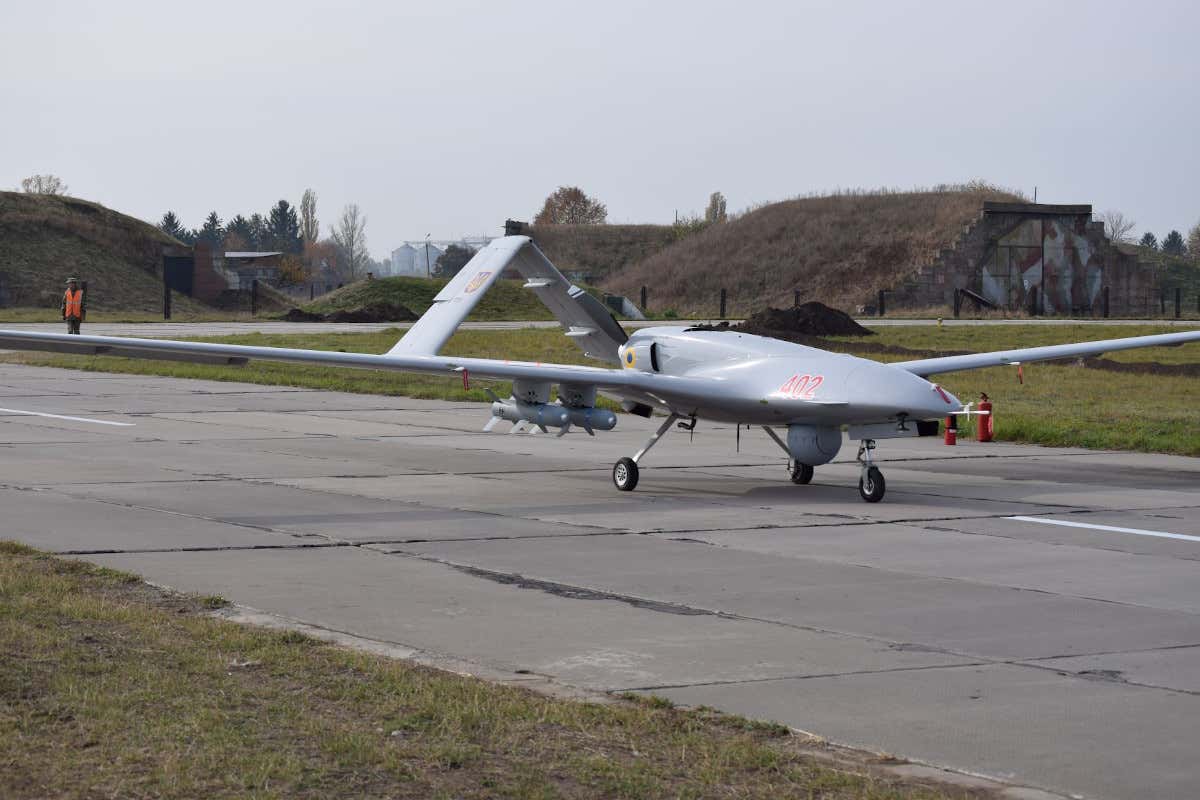Irrespective of the eventual outcome of the Russia-Ukraine war, the fact that the Russians are still on the battlefield, nearly two months after the Ukraine invasion, has caused considerable damage to Moscow’s military prowess and morale is going to figure prominently in the writings of military historians for years to come.
Side by side, the role drones have played in the Russia-Ukraine war so far will also become a historic landmark if military experts are to be believed.
Drones (UAV/UCAV) are believed to be rewriting the rules of this war. As John Parachini, a Rand Corporation military researcher says, “The tank was key at one point, but now drones may be the more decisive weapons system.”
It is also said that so far in this war of drones, Ukraine has done much better than Russia. Ukraine’s fleet of military drones — indigenous, military gifts from supporting countries, and the imported Turkish-built Bayraktar TB2- has been aptly used by the Ukrainians to destroy Russian resupply vehicles and surface-to-air missiles launchers.
Reportedly, during a nighttime ambush, the unmanned Ukrainian aircraft dropped small explosives on the Russian lead vehicle, which along with mines caused a pileup. And it is the Ukrainian UAVs that successfully repelled Russia’s attempt to seize the airport near Kyiv.

Russia-Ukraine War – Bearing The Losses
However, it is a big surprise to the experts that Russia has fared so poorly, compared to Ukraine, in the war on drones. All the more so because when they had intervened in Ukraine last time over Crimea in 2014, Russian drones were extensively used.
They were integrated very well into the Russian military’s battlefield tactics. But this time, the Russians have not had anywhere near their previous level of success with their drones.
Careful accounting in the open-source intelligence movement has shown significant losses, with 26 downed or captured Russian drones at the time of estimate.
Interestingly, Ukraine did not have any noticeable drone power in 2014 when Russia took back Crimea. But since then, it has methodically assembled a modest but highly capable set of drones.
The backbone of the fleet, with some 300 units fielded, is the A1-SM Fury and the Leleka-100 reconnaissance drones, both designed and manufactured in Ukraine.
But, the most lethal and effective has been the Turkish Bayraktar TB2 drone, a combat aerial flyer with a wingspan of 12 meters and an armament of four laser-guided bombs.
These drones are specifically aimed at destroying tanks, surface-to-air missile systems, and command posts.

It is said that these Turkish drones are not only effective, having proved their worth in the 2020-war between Armenia and Azerbaijan, but also quite economical at anywhere from $1 million to $10 million as compared to tens of millions that better-known combat drones, such as the MQ-9 Reaper, the backbone of the US Air Force’s fleet of combat drones, cost.
Why Isn’t Russia Using Its Arsenal Against Ukraine?
It is not that Russia itself does not have powerful drones. The Russian arsenal includes formidable drones like the Zala Kyb, which is a “loitering munition” that can dive into a target and explode, Sukhoi S-70 Okhotnik-B (Hunter), Grom (Thunder), Altius-U, Kronstadt Sirius, Kronshtadt Orion, Granat 1, -2, -3, -4, Takhion, ENIKS (Eleron-3), Orlan-10 and Leer-3. The most common Russian drones used recently in places like Syria and Ukraine happen to be the Eleron-3 and the Orlan-10.
What experts are pointing out is that if the Ukrainians are having an upper hand, it is because they have a better defense in the drone war because of the counter-drone technology.
For defense, Russia has been relying on its electronic warfare systems (EWS) to jam and spoof counter enemy drones. These systems fill the air with radio-frequency energy, increasing the noise threshold to such a level that the drone cannot distinguish control signals from the remote pilot.
Another standard counter-drone technique is sending false signals to the drone, with the most common being fake (“spoofed”) GPS signals, which disorient the flyer. Russia also uses the Pantsir-S1 surface-to-air missile (SAM) system as a cruise missile interceptor and destroyer of the UAVs.
However, both in Syria and Armenia, the Russian EWS fared poorly against Turkish Bayraktar TB2s (used heavily by Azerbaijan). It was seen that if used in large groups, Bayraktar TB2 UCAVs could degrade enemy air defenses. They invariably succeeded in neutralizing the Pantsir-S1 radars.
Besides, the new technologies in the newer drones being used by the Ukrainians include new features. On detecting a jamming signal, the drone could switch to frequencies that are not being jammed. Besides, if it is still unable to reestablish a connection, the drone operates autonomously with a series of preset maneuvers until a connection can be reestablished.
It is not that Russia, a leading military manufacturer, has not learned these lessons. Russia has very well-established networks of military technologists who monitor the latest technological developments in the adversary countries and find means to not only overcome their deficiencies but also excel above them.

Self-correction as part of a complex modernization process with the integration of command, control, communications, computers, intelligence, surveillance, and reconnaissance (C4ISR) as a central and critical feature has always been a priority with the Russian military.
Is Russia Losing The Ukraine War?
What explains then Russia’s poor performance in the drone war in Ukraine? Experts provide two possible answers.
One, the Russian military has been hampered by technology embargoes and a domestic industrial base that has been somewhat stagnant and lacking in critical capabilities in recent years because of the sanctions since 2014.
Despite their huge indigenous base, the Russian military does need foreign technology, after all. It has been seen that in each of their major UAV, there have been commercial and dual-use components such as GPS modules, electronic parts, cameras, and engines that have originated in the Czech Republic, France, Germany, Israel, Japan, South Korea, Spain, Switzerland, the United Kingdom, and the United States, American analyst Roger McDermott points out.
According to him, although these foreign dependencies are likely to lessen in the future, as the domestic defense industry finally adjusts to these realities, it also provides context for the extent to which existing R&D programs on UAVs and particularly UCAVs are somewhat slow to yield successful completion.
This is especially evident in the drive to re-balance the UAV inventory beyond ISR (Intelligence, Surveillance, and Reconnaissance) to cover reconnaissance-strike and strike systems.
The second one is the possible miscalculation on the part of the Russian military leadership to pay too much importance to “the Ground Forces tactics” in furthering and winning the war in Ukraine.
According to McDermott, “at the operational and tactical levels, Russian military operations during the early phase of its invasion of Ukraine, involved numerous errors and miscalculations.
Equally, it appears that Russian operational design was not centered upon the exploitation of high-tech military capabilities, and this extended to the limited, sporadic, and ineffectual use of UAV and UCAV platforms”.

Russia’s Wrong Strategy In Ukraine?
This point is also made by the Israeli independent defense analyst Guy Plopsky. According to him, “The Russians did not appear to exploit the partial success of their initial missile strikes and follow them up with large fixed-wing strike packages.
One explanation is that the Russians probably overestimated their capabilities and underestimated the Ukrainians. They may have believed that their ground forces would be able to seize key objectives swiftly and that the extensive use of operational-tactical aviation would therefore not be necessary.
This is supported by the fact that the opening phase of missile-aviation and artillery attacks that preceded the ground offensive was quite short. Many analysts expected it to be much longer and more intense. The apparent subsequent reluctance to commit large numbers of tactical aircraft may have been due to possible fears of suffering excessive losses”.
However, now that the Ukrainian lesson has proved very costly to the Russians, they may give much more serious thought to using the unmanned systems on the offensive and countering adversary systems in their tactical air defense in future wars.
- Author and veteran journalist Prakash Nanda is Chairman of Editorial Board – EurAsian Times and has been commenting on politics, foreign policy on strategic affairs for nearly three decades. A former National Fellow of the Indian Council for Historical Research and recipient of the Seoul Peace Prize Scholarship, he is also a Distinguished Fellow at the Institute of Peace and Conflict Studies. CONTACT: prakash.nanda@hotmail.com
- Follow EurAsian Times on Google News




